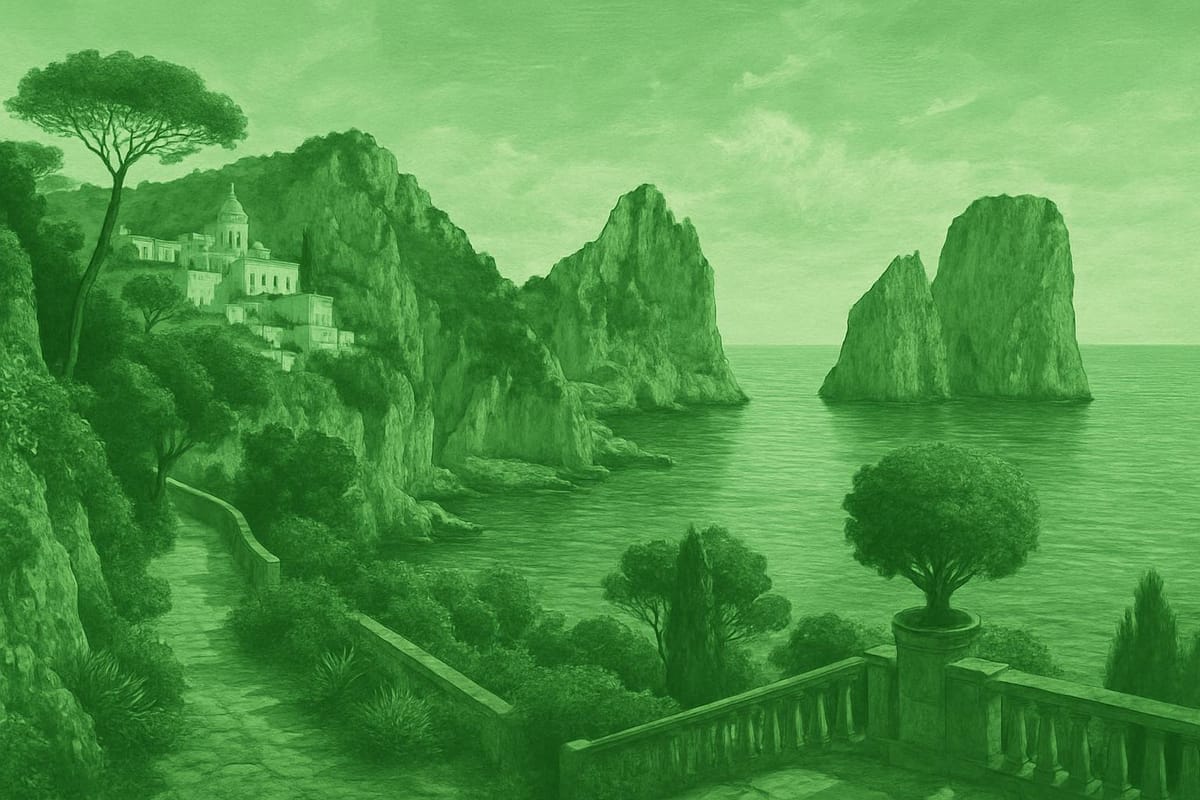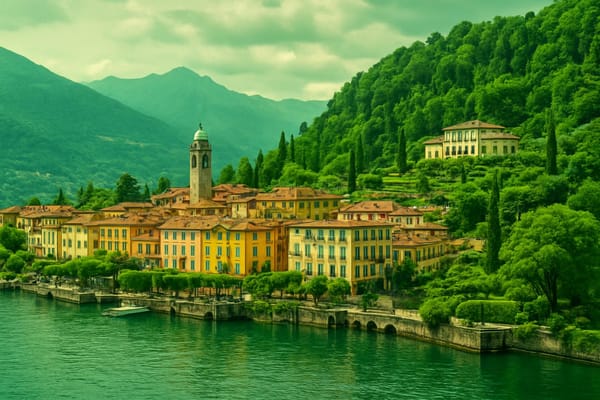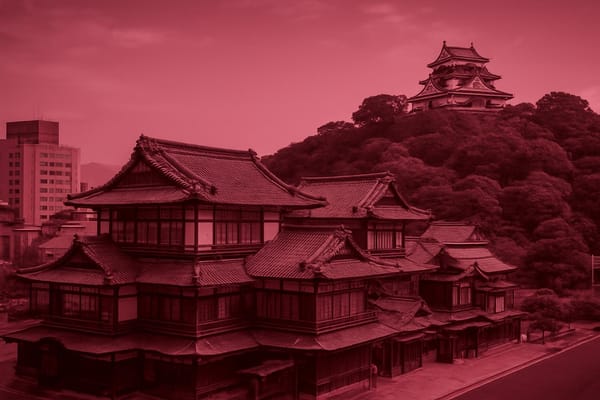Capri
Discover azure grottos, cliffside villas, boat tours & limoncello on a luxe island escape.

Important things to know about Capri
Capri, an emblematic town in Italy, sits like a jewel on a compact island framed by the deep blue of the Mediterranean, where a unique blend of natural light, historical layers and contemporary life shapes a distinctive urban personality; the town’s narrow lanes and whitewashed facades create an intimate atmosphere that nurtures a rhythm of daily life centered on local markets, family-run cafes and artisan workshops, and the scent of citrus and salt carried on warm breezes becomes part of the everyday soundtrack, while elegant villas and modest fishermen’s homes reflect a social fabric that mixes long-standing island families with an international community drawn by lifestyle rather than spectacle. Throughout Capri the pace shifts with the seasons, from quiet winter days when the sea-swept streets emphasize the island’s contemplative side, to sunlit months marked by lively open-air conversation, live music drifting from small squares and a marketplace economy that values local cuisine and fresh produce; small bakeries, baker’s ovens and seafood-focused kitchens anchor the culinary identity while boutique ateliers and artisan shops keep traditional craftsmanship alive. The town’s architecture-stone steps, arches and terraces-responds to the landscape, offering practical beauty and shady retreats, and the local culture prizes conviviality, privacy and refinement in equal measure, giving Capri a reputation for understated luxury, genuine community ties and an enduring sense of place that resonates with anyone seeking the quieter, more authentic rhythms of coastal Italian life.
Sightseeing hot-spots in Capri
Capri is synonymous with Mediterranean glamour, and the sightseeing highlights of Capri begin the moment you spot the island’s silhouette from the sea. A boat around the island reveals the legendary Blue Grotto, where sunlight filters through an underwater cavity to illuminate the cave in surreal azure, and the towering Faraglioni sea stacks that punctuate countless postcards. Many visitors choose a guided boat tour to fully appreciate hidden coves and dramatic cliffs, disembarking at Marina Grande to wander the lively waterfront or to hop a funicular up into the town.
The compact heart of Capri is made for wandering: the bustling Piazzetta offers people-watching and espresso under the sun, while the quieter lanes hide chic boutiques and historic churches. A short ride to Anacapri provides a quieter, more local feel and the chance to ascend Monte Solaro for panoramic views that span the Bay of Naples. Stroll through the Gardens of Augustus to see terraced blooms framed by sea vistas and to capture those postcard-perfect shots that make Capri a perennial favorite for travel photography and luxury escapes.
Beyond sightseeing, Capri thrives on sensory pleasures-fresh seafood, lemon-infused pastries, and the warm hospitality of island cafés. Spend an afternoon at Marina Piccola for sunbathing and swimming in crystal waters, then return to Marina Grande for ferry connections to the mainland. Timing a visit in spring or early autumn helps avoid peak crowds and enhances photography and sunset-watching opportunities. Whether seeking natural wonders, chic shopping, or relaxed seaside charm, the island’s sightseeing highlights promise unforgettable memories.
Hotels to enjoy in Capri
Capri is synonymous with luxury hotels and intimate boutique stays perched on cliffs overlooking the Gulf of Naples. Hotels in Capri blend timeless Mediterranean elegance with modern comforts: think white-washed terraces, hand-painted tiles, and infinity pools that frame a perfect sea view. From elegant family-run properties near the Piazzetta to grand resort-style Capri hotels with private beaches at Marina Piccola, every visitor can find accommodation to match their mood-whether romantic, adventurous, or leisurely. Many Capri hotels offer curated experiences such as private boat trips to the Blue Grotto, cooking classes with local chefs, and sunset aperitifs on panoramic terraces, making a stay not just a night but a memorable part of the island itinerary.
When searching for the best hotels in Capri, consider seasonality, proximity to key sights, and the kind of atmosphere you prefer-lively and central or secluded and serene. Booking hotels in Capri well in advance secures the most desirable rooms, especially those with panoramic balconies and direct sea view access. Families may opt for larger suites and concierge services, while couples often choose cliffside hideaways for privacy and spectacular sunsets. Whether you’re comparing Capri accommodation by price, amenities, or guest reviews, the island’s wide range of Capri hotels guarantees an unforgettable Italian island escape where sublime scenery and refined hospitality meet.
Restaurants to try in Capri
The Capri restaurants scene is a vivid mosaic of flavors, combining traditional Mediterranean cuisine with contemporary flair on an island that seems made for alfresco meals. From cozy trattorie tucked into narrow streets to elegant seaside venues with panoramic views, dining in Capri, Italy, celebrates fresh seafood and seasonal produce harvested from nearby farms and the Tyrrhenian Sea. Visitors seeking an authentic Capri dining experience will find classics such as spaghetti alle vongole, grilled fish, and Caprese salads prepared with ripe tomatoes, creamy mozzarella, and fragrant basil while savoring the aroma of citrus groves. Many restaurants emphasize local ingredients, pairing simple yet refined dishes with house-made limoncello or regional wines that accentuate the island’s sunny character.
Exploring restaurants in Capri also means choosing between lively harbors and serene hilltop terraces, whether you prefer the bustling energy near Marina Grande or the quieter lanes of Anacapri. The best restaurants Capri offers blend spectacular vistas with attentive service, making each meal a memorable dining experience for couples, families, and food enthusiasts. As the sun dips toward the sea, terraces overlook the harbor and create a golden backdrop perfect for a romantic dinner or celebratory meal. Seasonal menus and chef-driven innovations keep Capri’s culinary scene fresh and inviting, ensuring that every visit to this iconic island in southern Italy reveals new tastes, textures, and reasons to return.
Best shopping stops in Capri
Capri is synonymous with luxury boutiques and sun-soaked style, and the shopping highlights of Capri deliver an unforgettable mix of high fashion and authentic island charm. Strolling through Via Camerelle and the quaint lanes off the Piazzetta, visitors find designer labels displayed alongside independent ateliers where artisan makers craft one-of-a-kind pieces. The island is famous for handmade sandals, vivid Capri blue linens, and delicate coral jewelry, each item reflecting a blend of Italian elegance and Mediterranean flair. For those seeking memorable Capri souvenirs, traditional ceramics, lemon-scented cosmetics, and bespoke hats capture the island’s spirit while local boutiques offer seasonal dresses and exclusive accessories that make shopping in Capri an experience as much about atmosphere as acquisition.
Beyond the well-known streets, the best shopping in Capri includes hidden workshops where local crafts are shaped by generations of artisans, and specialty stores that focus on sustainable and handcrafted goods. Market-style stalls and family-run shops present authentic options for travelers who want more than mass-produced items, and the island’s charming storefronts and panoramic views enhance every purchase. Whether hunting for high-end fashion, unique home decor, or thoughtful gifts, Capri’s retail scene balances prestige and personality, making it a top destination for discerning shoppers who value both heritage and contemporary Mediterranean design.
Nightlife highlights in Capri
Capri's nightlife sparkles from the golden hour into the small hours, offering a mix of glamorous terraces and intimate bars that define the island's unmistakable dolce vita. As the sun dips behind the Faraglioni, crowds gather in the Piazzetta and along winding alleys for aperitivo, sipping classic cocktails and local limoncello while watching the world go by. The compact charm of Capri, Italy means that a short stroll can lead you from chic wine bars to elegant rooftop lounges with panoramic views of the Tyrrhenian Sea, creating an evening that blends luxury with authentic island warmth.
Later, the energy shifts to lively clubs, cozy live music venues and seasonal beach parties that draw both visitors and locals seeking late-night fun. Boat trips from Marina Grande often turn into floating celebrations, and DJs or small ensembles keep the rhythm alive for those who prefer dancing under the stars. Whether you crave sophisticated drinks, barefoot seaside gatherings, or a vibrant club scene, Capri’s nightlife highlights promise memorable nights framed by stunning scenery and an unmistakable island spirit.
Getting around in Capri
Capri, Italy has a unique airport and train situation: the island itself has no airport and no train lines, so travelers must use nearby hubs-primarily Naples-Capodichino Airport (NAP) or Rome’s airports-and then connect by road and sea; from Naples you can reach the port at Molo Beverello or Calata Porta di Massa by taxi, Alibus or private transfer and catch a hydrofoil or ferry to Marina Grande, while visitors coming by rail use Naples Centrale or the Circumvesuviana line to Sorrento and transfer to a boat; typical routes for “how to get to Capri” include flying into Naples then taking a train or bus to the port, or traveling by train to Naples or Sorrento and boarding a fast boat to Capri, making clear that there is no direct train onto the island itself, so plan for a short sea crossing and local connections once ashore-Capri’s funicular links Marina Grande with the Piazzetta, buses serve Anacapri, and taxis and private boat transfers can streamline arrivals, all important for anyone searching for practical Capri travel advice, Naples to Capri tips, or coastal transfer options.
Culture must-see's in Capri
Capri, Italy, is a compact island whose culture highlights blend centuries of tradition with cosmopolitan flair. Strolling through the Piazzetta-the island’s lively heart-you encounter a social ritual where locals and visitors converge over espresso, gossip, and people-watching, reflecting the warm, communal spirit that defines Capri culture. Historic villas and gardens such as Villa Jovis and the Gardens of Augustus reveal influences from Roman emperors to modern artists, while artisan workshops produce hand-painted ceramics and the famed Capri style striped shirts and sandals. The dramatic coastline and natural wonders, including the iconic Blue Grotto, have inspired painters, poets, and filmmakers, ensuring that art and landscape remain inseparable in narratives about Capri, Italy.
Food and festivals are central to the island’s living traditions, with Capri cuisine spotlighting fresh seafood, sun-ripened tomatoes, olive oil, and the zesty fragrance of limoncello. Local markets and family-run trattorie preserve recipes passed down through generations, offering tastes that tell the story of the sea and the land. Seasonal events-religious processions, music nights, and summer art exhibitions-animate narrow lanes and scenic overlooks, inviting visitors to experience a vibrant, tactile culture that balances historic continuity with contemporary creativity. For anyone researching cultural travel in Italy, Capri’s distinct blend of nature, gastronomy, and artisan craft makes it an essential destination to explore.
History of Capri
Capri, Italy, has a layered and compelling past that has shaped its reputation as one of the most alluring islands in the Mediterranean. Inhabited since prehistoric times, Capri first entered recorded history with ancient Greek settlers and later became a prized outpost of the Roman world. The island’s dramatic cliffs and sheltered coves made it an ideal retreat for the imperial elite, most famously for Emperor Tiberius, who established a network of palatial villas, the most prominent surviving vestige being Villa Jovis. Under Roman rule Capri flourished as a place of luxury and political seclusion; archaeological remains, marble fragments and mosaics still reveal the scale of imperial ambition. After the fall of Rome the island endured centuries of raids and shifting rule, with Byzantine, Lombard and medieval influences leaving traces in local architecture and rural traditions. The rediscovery of the Blue Grotto in the 19th century by European artists and writers signaled a new chapter, transforming Capri from a strategic stronghold into an international symbol of romantic natural beauty.
The modern history of Capri, Italy, is inseparable from its rise as a cultural and tourist destination. From the late 19th century onward, writers, painters and the European aristocracy flocked to the island, drawn by the luminous sea, the towering Faraglioni stacks and the intimate charm of the Piazzetta, the island’s vibrant social heart. The harbor at Marina Grande developed as the principal entry point, while narrow lanes and terraced gardens preserved a sense of secluded elegance that attracted a global jet set in the mid-20th century. Today Capri balances conservation with high-end tourism, and ongoing efforts to protect its archaeological sites, marine environment and traditional crafts reflect a community determined to honor its rich past. The history of Capri continues to be written in its stone churches, Roman ruins and lively squares, making the island not only a top travel destination but also a living museum of Mediterranean history and culture.



